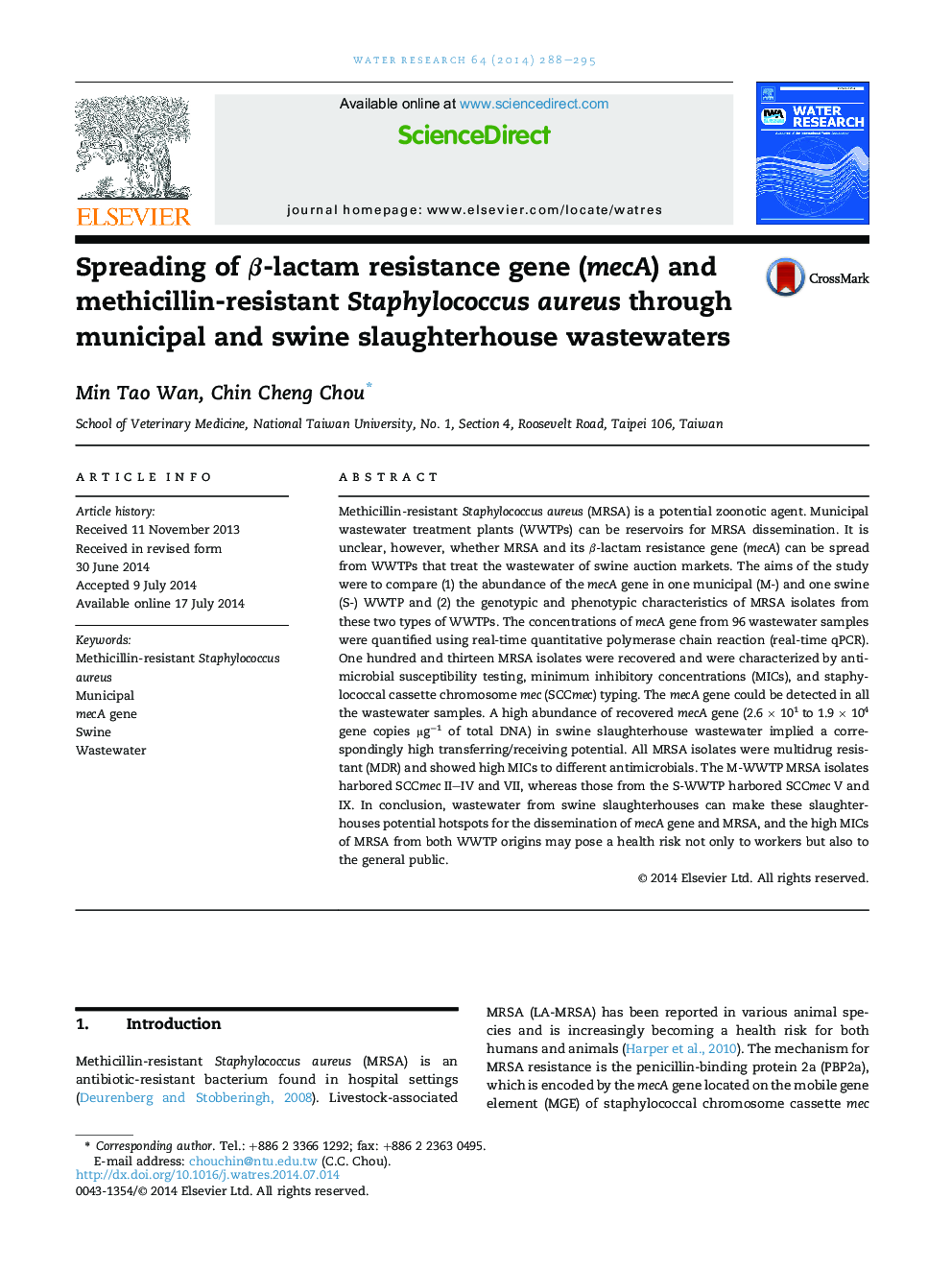| کد مقاله | کد نشریه | سال انتشار | مقاله انگلیسی | نسخه تمام متن |
|---|---|---|---|---|
| 4481448 | 1623104 | 2014 | 8 صفحه PDF | دانلود رایگان |

• β-lactam resistance gene (mecA) widely distributed in both municipal and swine slaughterhouse wastewaters.
• Swine slaughterhouse wastewater as a hotspot for mecA gene and MRSA dissemination.
• Swine MRSA isolates are multidrug-resistant.
• High MICs of MRSA in both WWTP origins may pose a potential public health risk.
Methicillin-resistant Staphylococcus aureus (MRSA) is a potential zoonotic agent. Municipal wastewater treatment plants (WWTPs) can be reservoirs for MRSA dissemination. It is unclear, however, whether MRSA and its β-lactam resistance gene (mecA) can be spread from WWTPs that treat the wastewater of swine auction markets. The aims of the study were to compare (1) the abundance of the mecA gene in one municipal (M-) and one swine (S-) WWTP and (2) the genotypic and phenotypic characteristics of MRSA isolates from these two types of WWTPs. The concentrations of mecA gene from 96 wastewater samples were quantified using real-time quantitative polymerase chain reaction (real-time qPCR). One hundred and thirteen MRSA isolates were recovered and were characterized by antimicrobial susceptibility testing, minimum inhibitory concentrations (MICs), and staphylococcal cassette chromosome mec (SCCmec) typing. The mecA gene could be detected in all the wastewater samples. A high abundance of recovered mecA gene (2.6 × 101 to 1.9 × 104 gene copies μg−1 of total DNA) in swine slaughterhouse wastewater implied a correspondingly high transferring/receiving potential. All MRSA isolates were multidrug resistant (MDR) and showed high MICs to different antimicrobials. The M-WWTP MRSA isolates harbored SCCmec II–IV and VII, whereas those from the S-WWTP harbored SCCmec V and IX. In conclusion, wastewater from swine slaughterhouses can make these slaughterhouses potential hotspots for the dissemination of mecA gene and MRSA, and the high MICs of MRSA from both WWTP origins may pose a health risk not only to workers but also to the general public.
Figure optionsDownload high-quality image (183 K)Download as PowerPoint slide
Journal: Water Research - Volume 64, 1 November 2014, Pages 288–295